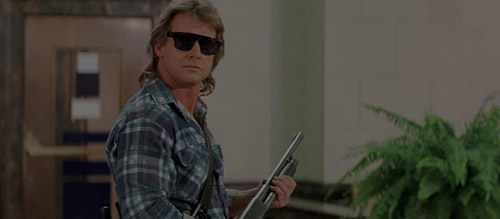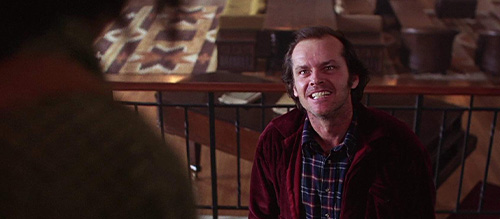Why the 1980s Is the Best Decade for Horror
Let’s say you’re a horror fan – you did after all click on this article – and let’s imagine all horror films were to disappear except for one decade’s worth. Which decade would you keep?
The ‘50s were great for classic ghost stories, the ‘90s witty and self-referential, and for J-Horror the 2000s represent the peak – but in the end the choice for most would be the 1980s. You’d retain multiple iconic franchises (A Nightmare on Elm Street; Friday the 13th), the best horror anthologies (‘Creepshow’, ‘Tales from the Darkside’) and several kids classics too. Hell, you’d even get Hellraiser. But the abidingness of ‘80s horror goes beyond individual good films, many as there are, with ’80s horror being particularly worthy of celebration for offering a happy coincidence of an artistic, political and cultural context which saw the genre both establish itself and ascend to unsurpassed heights.
A Nightmare on Elm Street (1984)
Firstly, 80s horror just looks good. The technology of the period was in just in the right place to profit from new developments in prosthetics special effects, and the rise of the synthesizer offered a piquant musical accompaniment. Even the film stock of the period has a disconcerting brightness. The best 1980s horrors, such as Hellraiser, The Fly and The Thing are design classics, their aesthetics perched perfectly between the homespun and the futuristic. In the 1970s pictures such as Jaws and Alien offered substantial advances in effects – and such extravagant curiosities as Zombi 2’s (1979) shark vs. zombie sequence – but it was the fact that impressive effects had become so established (and accessible to lower budgets) which saw them become so much of a part of the furniture for ‘80s horror; think of the twisted visions of Re-Animator, conjured up for less than a million dollars. Nothing is less scary than bad CGI, a bane of later horror, and in contrast to the reserve of earlier eras, 1980s horror fully embraces the possibilities of intricate gore, as the period’s ascent of the ‘body horror’ genre reveals. Much 1980s horror gets us through its inimitable style – a style that whole series such as ‘Stranger Things’ profit from today.
Yet there’s plenty of 1980s horror which now looks terrible and remains more interesting than the terrible-looking films of other eras (films like Critters or Creepozoids). Even when 1980s horror is bad, it’s memorable. Why then does your average 1980s horror flick still intrigue more than the misfires of other times? Here it helps to situate the films in the wider political context of the time.
The 1980s were, in the Anglo-American world at least, a time of political paranoia, with the rise of the AIDs crisis and a re-escalation of the Cold War. If horror as a genre is the exploration of unspoken terror through narrative, the 1980s offered an ideal background of repression and subjugation (even the era’s most famous monster, Freddy, literally haunts unconscious minds). One could even argue that the more reactionary an era’s politics, the better it is for horror as a genre – not least if paranoia and dread is coupled with increasing material wealth; Brian Yuzna’s Society, in its epochal closing debauchery, imagines what might grow in this gap. If Walter Mondale had won the 1984 US Presidential election, that film may not exist.
They Live (1988)
This unease can also be extended to the social culture of the time. The era’s often gratuitous female nudity is instructive in this regard; the female-attracted viewer can’t deny they enjoy the (almost always) female flesh on show, while also admitting it contributes to a generally sleazy and fevered atmosphere. The both satirically-appropriate and utterly gratuitous sex scene at the end of They Live is a good example of this; the scene both satirizes the female body as commodity and gets a cheap laugh and minor sexual thrill out of it. We’ll satirize capitalist exploitation, the director seems to be saying, but we also want to show off some breasts. And a lot of 1980s horror doesn’t even bother with the satirical element. Think about ‘The Raft’ sequence of the anthology film Creepshow 2, where the female protagonist is stuck between unsolicited groping from the main male character and suction death by underwater monster. For many of the 1980s’ Final Girls, there are no real safe spaces, and surviving the immediate horror means only going back to surviving the horror of the everyday.
And that’s just in terms of the heteronormative, and heterosexual relationships. In LGBTQ+ terms, a lot of 1980s horror has astoundingly reactionary sexual and cultural politics, like the gobsmackingly transphobic ending to Sleepaway Camp or the confused homophobia of A Nightmare on Elm Street 2. Both of these films equate having a minority sexual or cultural identity with being a serial killer. Cruel politics that, along with the era’s dated attitudes (with of course honourable exceptions) to gay people, trans folks and women, make up a distinctive part of why ‘80s horror is so creepy. The sheer moral panic around difference makes ‘80s horror so compelling in this regard – frankly, Tetsuo the Iron Man, who fuses himself into a gigantic scrap-metal testicle in order to realize his queer desire, needs therapy. And looking back even the era’s children’s film like The Goonies or Gremlins are also noticeably nastier; they present horrible worlds in which horrible things happen, even to children, and don’t offer us bromides of liberal piety to guide us through as a lot of our horror does today. Even Stephen King’s great contributions to horror in the decade (The Dead Zone; The Shining) are noticeably less sentimental than his later ones. To put it facetiously, ‘80s horror is good because the 1980s were horrible.
The Shining (1980)
However, as befits a reactionary time, the ’80s were also a decade where countercultures sprung up all over the place – in music, lifestyle and print culture. Horror is no exception. Just as there is great mainstream horror with dated politics, the 1980s is also home to brilliant subversive horror from independent filmmakers such as David Cronenberg and John Carpenter (aforementioned gratuitous nude scenes aside). Perhaps it is actually simple; in the 1980s an awful lot of very talented people thought that horror was a genre worth bothering with, and one in which there were still new things to be done. Decades later, we’ve seen multiple horror films for every permutation of fright and even Human Centipede levels of perversity don’t summon much more than a ‘That’s nice dear’ for the modern horror devotee. Indeed, much of the most acclaimed horror of recent years, such as It Follows or Hereditary, has been sharply indebted to 1980s horror; as enjoyable as these films are, they are inevitably less scary than their precursors – they are at worst horror films about horror films rather than innovative works. The scariest horror films of recent years, such as Liam Gavin’s A Dark Song, are those located entirely in a contemporary world and not dedicated to the perfect recreation of an already achieved aesthetic tradition. Indeed, the most influential horror forms since the 1980s, such as the found footage genre, are notably ones unrelated to the period.
In fact, of all genres it is horror that suffers most from connoisseurship and established markers of quality; something we are certifiably aware of, as a ‘prestige’ horror film can no longer surprise us enough to scare us. And, above all, 1980s horror was very scary. Even some of its most comically-dated films contain moments of genuine terror. Indeed, so much so that even after decades of watching it horror fans are still establishing new classics and curiosities perhaps both best forgotten and unforgettable. (Pumpkinhead springs to mind.) Arguably the years that followed have suffered as a result of the 1980s’ legacy and struggled to expand on the benchmark for horror and repository of horror tropes the decade bequeathed. Can the period really be surpassed? Certainly no decade will ever again create films so uneasy with suburban paranoia, fear of sexuality and unexpected explosions of gore, and no horror filmmaker could or should attempt to adopt the era’s sexual politics today. Right now modern horror can be influenced by ’80s horror or it can deviate from it entirely. What it can’t do is beat the ’80s on its own terms, problematic as they are. One thing the era shows though is that, for the horror genre, ‘problematic’ can be good.
Written by James Harris
You can support James Harris in the following places:
Twitter – @jamesharrisnow




